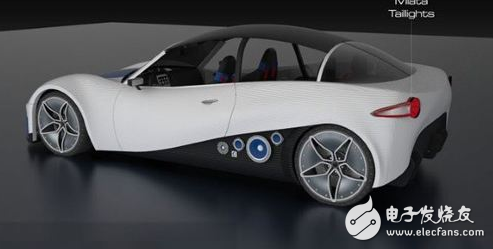Recently, Siemens launched a breakthrough solution for automated driving systems at the "Innovation Day" held in Chicago. The solution is part of the SimcenterTM portfolio, which minimizes the need to create a large number of physical prototypes while significantly reducing the number of test miles recorded to demonstrate the safety of autonomous vehicles.
According to a report released by Rand CorporaTIon, in order to prove that the self-driving car is safe and reliable, it will not cause death and injury. The prototype of the car needs to reach hundreds of millions of miles, and in some cases even hundreds of billions of miles. It takes more than ten years to accumulate this test mileage. The authors of the report believe that this result is inconsistent with the recent commercial viability of driverless cars. To address these challenges, researchers have come up with innovative test methods, such as advanced simulation techniques.

Siemens' new solutions leverage advanced physics-based simulation technology and innovative sensor data processing technology to help automakers and their suppliers meet industry challenges and are expected to reduce development, verification and validation time for driverless vehicles.
The new solution integrates the autopilot technology of Siemens' recently acquired Mentor Graphics and TASS InternaTIonal. TASS' PreScanTM simulation environment generates highly realistic physics-based simulation of raw sensor data, providing an unlimited number of possible driving scenarios, traffic conditions and other parameters. PreScan-simulated LiDAR, radar, and camera sensor data is passed to Mentor's DRS360TM platform and blended in real time on the platform to create high-resolution models of vehicle environments and driving conditions. Customers can then use the DRS360 platform's superior perceptual resolution and high-performance processing to test and refine proprietary algorithms for mission-critical, driving strategies and other mission-critical tasks.
Dr. Jan Leuridan, Senior Vice President, Simulation and Test Solutions, Siemens PLM Software, said: “Automotive manufacturers are quickly realizing that physical prototypes and road tests alone cannot reproduce the many complex driving scenarios that a driverless car may encounter. In fact Many of the most deadly scenarios are impossible to reproduce, while others are very dangerous to reproduce, and there are business ethical requirements. Obviously, the short-term commercial viability of fully automated vehicles is highly dependent on advanced, physics-based Simulation technology, and Siemens has set the tone for the development of the global automotive industry in this field."
To provide the most comprehensive and accurate solution, Siemens PLM Software is working with many of the world's leading manufacturers of LiDAR, radar and vision sensing products to develop 3D simulation versions of specific physics-based sensor modules. The analog sensor is compatible with the new Siemens tool chain and can be adjusted using the detailed design information provided by the sensor supplier, or it can be verified using actual measurement data for optimum accuracy. One of the most important sensor partners is Silicon Valley-based innovative company Cepton Technologies, which is known for its small memory-based remote LiDAR sensors. Other sensor partners will be announced later this year.
Phil Magney, founder and chief autonomous driving researcher at VSI Labs, said: "Autonomous car developers are facing a lot of pressure to accelerate the development, validation and performance requirements of autonomous driving solutions, and the more simulation technology can provide them. More and more valuable solutions. Siemens provides simulation solutions for all phases of product development, covering the complete development process from sensors to processors, subsystems, and the entire vehicle. Siemens has a larger simulation solution. With space, it is able to take the lead in the validation and verification of autonomous vehicle solutions."
AvailabilityThe Siemens PLM Software autonomous driving solution is scheduled to be launched in the third quarter of 2018.
Siemens PLM Software is the world's leading provider of product lifecycle management (PLM) and manufacturing operations management (MOM) software, systems and services with more than 15 million installed software and more than 140,000 customers worldwide. The company is headquartered in Plano, Texas, USA. Siemens PLM Software works with enterprise customers to deliver leading industry software solutions that enable them to achieve sustainable competitive advantage through revolutionary innovation.
Common Uses
AGM has been around since the early 1980s. It was first used for military aircrafts and UPS (uninterrupted power supply) because of its weight, safety and long-lasting power. Presently, AGM batteries are used in powering cars and car accessories such as steering wheels, windshields and heated seats. Racing leagues such as NASCAR choose AGM products because of its resistance to vibration. The Battery also performs well in cold temperatures, which is why AGM batteries are prevalently used for motor homes and robotic applications.
Advantages of AGM Batteries
Low internal resistance
Longer, efficient usage
Ability to survive low temperatures
Spill proof
Responsive to load
Water retention
Faster charging time compared to flooded batteries
Less prone to topping charge, can be stored for a longer time
12V Agm Battery,Best Agm Battery,H6 Agm Battery,H7 Agm Battery
NANTONG RONGCHANG IMPORT&EXPORT CO.,LTD , https://www.ergsolarcn.com
